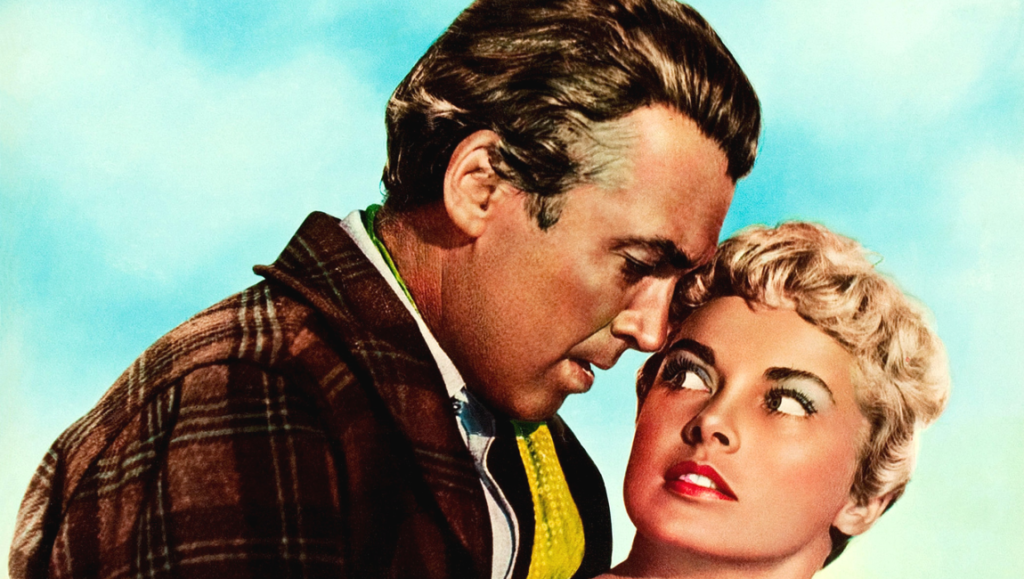The history of the Western is fertile territory for studying many of the greatest American filmmakers of the 20th century. While none worked exclusively in the genre — Ford, Hawks, Mann, Boetticher, Lewis, de Toth, and a litany of others dabbled in all manner of modes — each carved out their own little corner of the Western, unique niches in which to develop their (sometimes caustic, sometimes joyous) worldviews and indulge their own peculiar idiosyncrasies. Graduating from the theater to television to assistant director duties, Mann eventually helmed successful B-pictures and “middle works” (as James Naremore has dubbed them, something between B- and A-pictures), before cutting a path through crime dramas on his way to an explosion of productivity in the late 1940s and ’50s. With Jimmy Stewart in tow, a star eager to revamp his own image after years away from Hollywood during World War II, Mann directed a string of successful Westerns (roughly from 1950–1958) that reinvigorated the genre with heaping doses of moral ambiguity and good guys who didn’t always seem so good.
Writing on Winchester ’73 in 1951, the first of the eight collaborations between Mann and Stewart, Manny Farber declared it an “arty western,” and a “striking example of how to humanize an overworked genre with a director’s original ‘film eye.”‘ It’s unclear what exactly the phrase “film eye” means, but one suspects Farber is referring to something like a sensibility — never an auteurist in the Cahiers sense, even after it became fashionable, Farber nonetheless valued certain directors more than others and would happily champion his favorites. Catching up with The Naked Spur upon its release in 1953, Farber wrote: “He [Mann] demonstrates that nothing is more fascinating that the objective study of nihilistic evil, death, and destruction.” In his famous 1957 essay “Underground Films,” Farber remarks, “Mann films use American objects and terrain — guns, cliffs, boulders, an 1865 locomotive, telephone wires — with more cruel intimacy than any other film-maker.” That phrase “cruel intimacy” is perhaps the best descriptor of Mann’s work, a filmography full of hardboiled men pursuing or being pursued by other hardboiled men, often to the detriment of their own well-being. The Naked Spur is arguably the greatest of this film cycle (challenged only by 1958’s Man of the West), one which surely indulges in cruelty and violence, but also the emotional consequences of devoting one’s life to such violence.
Here, Stewart plays Howard Kemp, a bounty hunter in pursuit of outlaw Ben Vandergroat (a swarthy Robert Ryan). Kemp has Vandergroat trapped on a cliff top, but the two men are at a stalemate and Kemp cannot climb the sheer cliff face. Kemp enlists first the help of an old prospector, Jesse Tate (Millard Mitchell), then a passing Calvary man, Roy Anderson (Ralph Meeker, matching Ryan for oily charm). It’s Anderson that finally makes the ascent, and when the men catch Vandergroat, they discover that a woman, Lina Patch (Janet Leigh), is traveling with him. Aware of the bounty on Vandergroat’s head, Tate and Anderson insist in accompanying Kemp back to civilization and receiving a share of the money. And so the motley crew sets forth through the rocky wilderness, each with their own agenda. As romance blossoms between Kemp and Patch, the tentative truce between the men begins to erode, thanks primarily to Vandergroat’s Iago-like poking and prodding. His various entreaties and subterfuges prey on the men’s need for money, each well aware that the fewer of them there are, the more reward there will be to divvy up. The entire cast is aces, but Stewart is particularly good as the tortured bounty hunter with a tragic past. Mann puts Stewart’s neurotic proclivities to good use, finding the tortured soul behind the aw-shucks persona (Stewart’s other key director of the ’50s, Hitchcock, did something similar, but Mann beat 1958’s Vertigo to the punch by five years).
Serge Daney once wrote that Sergio Leone “offers a new way of showing bodies floating in dust coats and figures adrift in the desert of a landscape too vast for them.” Mann likewise achieves something like this, but here the landscape is not only vast, but also an encroaching thing, claustrophobic even. These men are not only at war with each other, but also with an uncaring natural world. The plot point that sets events in motion — Kemp needing assistance to scale a steep cliff — is nothing if not nature itself impeding the desires of men. In that sense, the final shootout that occurs on the rocky shores of a raging, rushing river, further epitomizes this idea — Vandergroat’s lifeless body swept away by the unflappable currents of the river before getting caught on a jutting-out tree branch. Nature intercedes regardless of man’s intentions. The film’s final scene is oft-mentioned, and for good reason: forced to choose between collecting the bounty on Vandergroat’s corpse and retaining some semblance of his humanity, Stewart’s entire body seems to crumple under the weight of his existential crisis. Mann manages to convey something like a man battling for his own soul — Kemp’s final decision reveals the humanity still peeking out from Mann’s sharp, hard worldview.


Comments are closed.